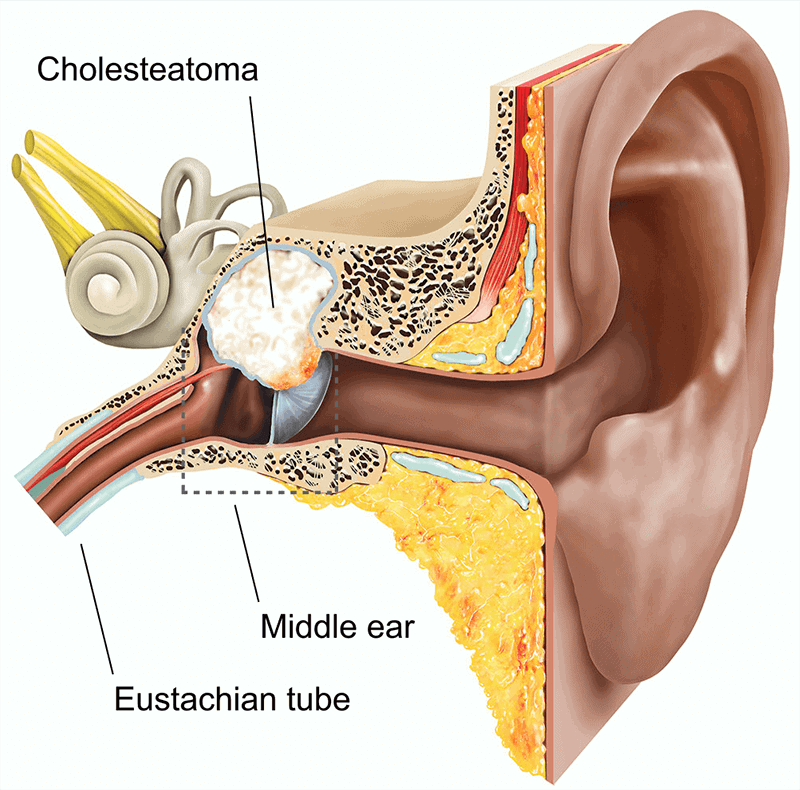Cholesteatoma
Procedures
Cholesteatoma
A cholesteatoma is a benign growth of skin cells that most commonly occurs in the middle ear and mastoid behind the eardrum, and sometimes occurs in the ear canal. As it grows it erodes the ear and can cause a hearing loss, loss of balance, and affect the facial nerve causing facial weakness. If it becomes infected it causes ear pain and discharge and the infection can spread into the brain causing a life-threatening meningitis or a brain abscess.
Skin lines the ear canal and eardrum but is not present behind the eardrum in the middle ear or mastoid. This skin regularly sheds off the dead skin cells and produces new skin cells which migrate down the ear canal and help the ear canal clean itself. Cholesteatomas occur when the skin builds up eroding the ear canal or more commonly is trapped behind the eardrum in the middle ear and mastoid.

Surgery is the only option to remove it and prevent it getting worse, but in some people regular cleaning and observation may be appropriate.
The types of surgery required depends on the extent of the cholesteatoma and the damage that it has already done. It often requires a combination of the different types of surgery which include:
Myringoplasty
The cholesteatoma is removed with the involved drum and then a new drum is created with a graft.
Atticotomy
If the cholesteatoma is confined only to the superior part of the middle ear (attic) then surgery limited to this area may be all that is required.
Canalplasty
The ear canal is widened to provide access.
Tympanoplasty and Ossiculoplasty
The cholesteatoma is removed from the middle ear (tympanoplasty) and the ossicular chain is reconstructed (ossiculoplasty).
Mastoidectomy
An incision was placed behind the ear and the mastoid bone behind the ear canal is drilled out. This is done if there is cholesteatoma present in the mastoid or to provide access behind the ear canal into the middle ear behind the drum.
Combined approach tympanoplasty or Canal Wall Up Mastoidectomy
This is where the cholesteatoma is removed via the ear canal and through the drilled out mastoid behind the ear canal. The ear canal is left intact. This may require a second look operation 6-18 months later or serial MRI to check that there is no residual cholesteatoma left.
Modified Radical Mastoidectomy or Canal Wall Down Mastoidectomy
First a combined approach tympanoplasty via the ear canal and by drilling out the mastoid behind the ear canal is done, and then the posterior wall of the canal is removed so that the ear canal, mastoid, and most of the middle ear is combined into one cavity. This involves a meatoplasty to widen the entrance to the ear canal.

